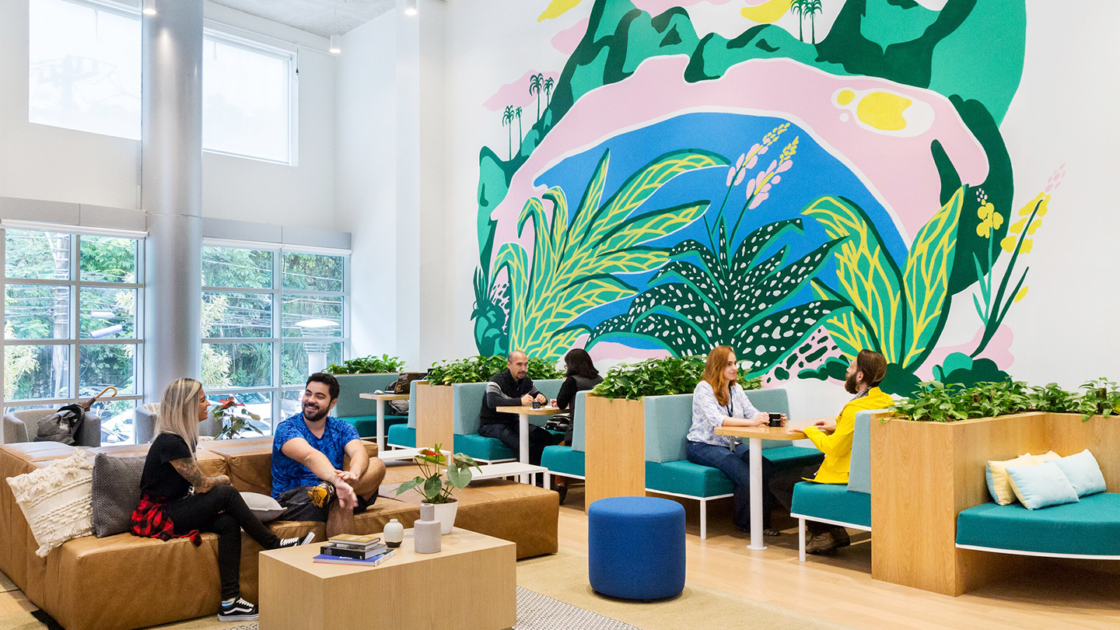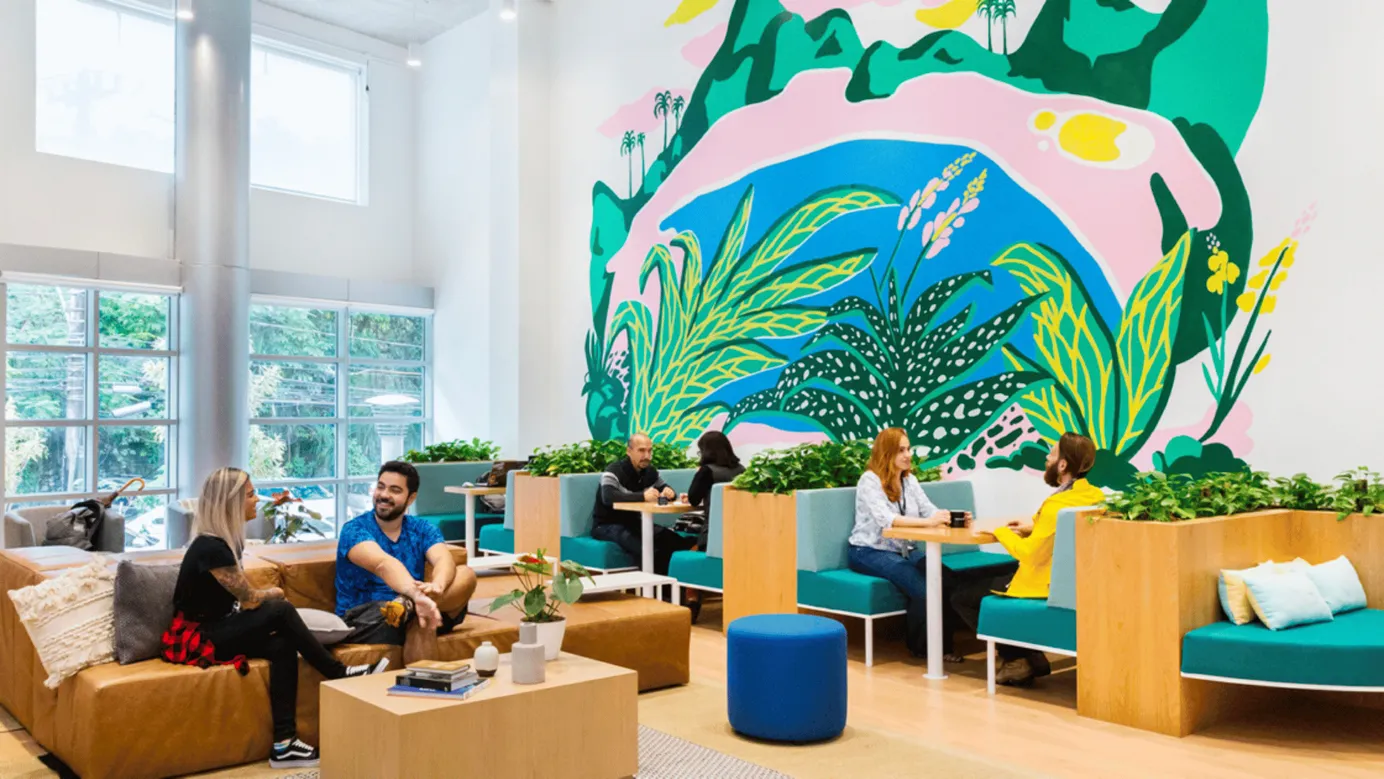5 étapes pour améliorer la créativité sur le lieu de travail
Apprenez cinq façons efficaces d'améliorer la créativité sur le lieu de travail et favorisez une équipe plus innovante et plus productive grâce à notre guide.
Sur cette page
Il fut un temps où la créativité n'était associée qu'aux passe-temps et aux professions alternatives. Elle n'appartenait pas au domaine des emplois "sérieux" comme les affaires et la direction.
Mais nous vivons aujourd'hui dans un monde différent et la créativité est une compétence cruciale pour les dirigeants qui veulent mieux diriger les gens ou soutenir la croissance de leurs employés.
Google encourage les développeurs à consacrer 20 % de leur temps de travail à des projets créatifs. Si une grande entreprise rentable comme Google donne la priorité à la créativité, vous devriez en faire autant en tant que dirigeant.
Un dirigeant peut aider les entreprises à se développer plus rapidement en gérant les tâches et les personnes avec plus d'innovation et de créativité. En outre, le fait de laisser libre cours à la créativité permet de maintenir le moral des employés à un niveau élevé et de développer une culture de travail positive.
Lorsque les employés se sentent soutenus et valorisés, ils sont plus enclins à apporter leurs meilleures idées et à travailler en collaboration pour atteindre des objectifs communs.
Inversement, un environnement de travail hostile peut nuire au moral et au bien-être des employés, entraînant une baisse de la productivité et limitant les possibilités d'innovation.
En fin de compte, cela peut nuire aux revenus et à la rentabilité de l'organisation.
La seule façon de sortir d'un tel scénario négatif est de déployer des compétences de leadership pour motiver les employés et de laisser un espace pour nourrir et encourager la créativité.
La section suivante de cet article se concentre sur les étapes permettant de déployer les compétences de leadership afin d'améliorer la créativité des employés dans une organisation.
Comment améliorer la créativité des employés
Voici cinq moyens efficaces d'améliorer la créativité des employés sur le lieu de travail.
1. Fixer des objectifs et des attentes clairs
Chaque individu ou employé d'une équipe doit comprendre son rôle. Ils doivent savoir ce que leurs supérieurs attendent d'eux.
Il est essentiel de clarifier le rôle d'une personne afin d'éviter toute confusion et d'instaurer un bon environnement de travail.

Les employés adoptent une pensée innovante lorsqu'ils comprennent bien leur rôle. En cas de confusion quant à son rôle au sein d'une équipe, une personne ne peut pas intégrer ses idées créatives dans un processus.
Le travail d'un dirigeant consiste à donner aux employés une vision claire de leur rôle. Pour ce faire, il doit comprendre les forces, les faiblesses et le potentiel des membres de l'équipe. Il peut ainsi répartir les tâches en fonction des mérites des membres de l'équipe.
Une fois qu'un responsable connaît les points forts de chaque membre de l'équipe, il est possible de fixer des objectifs et des attentes clairs. Et non seulement cela, mais aussi écrire et assigner ces objectifs dans des planificateurs de contenu facilement accessibles.
Le fait de disposer d'objectifs clairs et d'un endroit où les référencer aide les organisations à obtenir de meilleurs résultats de la part des employés et à augmenter la productivité.
La création d'objectifs clairs rend les employés heureux, ce qui les motive encore plus à faire preuve de créativité. Dans un tel scénario, l'organisation connaît une forte augmentation de sa production en fin de journée.
2. Encourager la collaboration et le dialogue ouvert
La créativité a besoin d'être encouragée et reconnue. L'absence de ces deux éléments entraînera un manque de motivation pour sortir des sentiers battus. C'est pourquoi les dirigeants doivent reconnaître la créativité des employés et les encourager à maintenir des approches innovantes.
Les dirigeants ne peuvent encourager et reconnaître la créativité que s'ils sont ouverts au dialogue. Cela peut se traduire par une politique de la porte ouverte et une réponse rapide aux questions, aux courriels ou aux conversations. Et aider réellement les employés lorsqu'ils sont bloqués.
Dans de nombreuses entreprises, les employés ont besoin d'aide pour atteindre le sommet de la hiérarchie pour diverses raisons. Et un manque de communication conduira à un environnement négatif au sein de l'organisation.
Les dirigeants doivent conserver une attitude positive sur le lieu de travail afin de créer une atmosphère positive. Une attitude positive rend les dirigeants accessibles aux membres de l'équipe. Les travailleurs de votre organisation vous tendront la main pour discuter de leurs problèmes et de leurs préoccupations. En outre, ils essaieront de présenter leurs innovations pour impressionner les dirigeants.
Outre la reconnaissance de la créativité, la direction doit encourager la collaboration. Les dirigeants peuvent le faire en organisant des discussions de groupe, des ateliers et des événements pour aider les employés à socialiser et à nouer des liens en dehors du lieu de travail.
Ces pratiques développent une atmosphère de travail saine où les employés sont encouragés à mettre en valeur leurs compétences créatives. Ces activités contribuent également à créer des liens au sein de l'équipe, ce qui favorise la collaboration.
Alors, comment les chefs d'équipe peuvent-ils améliorer la collaboration des employés au sein d'une organisation ? Voici comment
- Créer un environnement favorable : Les chefs d'équipe doivent créer un environnement favorable pour encourager les membres à collaborer et à accomplir leur travail.
- Plates-formes de communication : Les chefs d'équipe devraient en outre proposer des plateformes de communication aux employés pour les aider à collaborer. Certaines de ces plateformes sont des outils tels que Slack, Asana, Trello ou des outils de chat de l'entreprise.
- Encourager les discussions de groupe : Les dirigeants doivent encourager les membres à discuter des différentes tâches et des objectifs lors de séances de discussion en groupe afin de mener à bien les projets.
- Écouter les idées : Une direction à l'attitude positive est toujours à l'écoute des employés afin d'améliorer la productivité et de soutenir les contributions créatives.
3. Favoriser un environnement sûr où la prise de risque est récompensée
Dans un environnement professionnel, il est courant de prendre des risques, ce qui suscite souvent des craintes. Les gens redoutent de prendre des risques et gardent leur créativité à l'écart. Un dirigeant doit évaluer les risques avec soin et permettre aux membres de son équipe de rester innovants dans leurs méthodes de travail.

Récompenser les compétences en matière de prise de risque est le meilleur moyen de surmonter la peur du risque. Le dirigeant doit reconnaître les employés qui ont une approche plus pratique de la prise de risques. L'échec peut parfois survenir, mais le fait de ne pas avoir peur de prendre des risques peut entraîner des changements révolutionnaires dans la culture de travail de l'organisation.
Voici quelques moyens d'encourager une prise de risque raisonnable :
- Créer une culture de la confiance : Instaurer une culture dans laquelle les employés se sentent en sécurité et peuvent exprimer leurs opinions et leurs idées sans crainte de représailles ou de jugement.
- Encourager l'expérimentation : Offrir aux employés la possibilité d'expérimenter et de tester de nouvelles approches sans craindre l'échec ou des conséquences négatives.
- Offrir des incitations : Récompenser les employés qui prennent des risques et proposent des solutions innovantes qui contribuent au succès de l'organisation.
- Reconnaître et célébrer les succès : Reconnaître et célébrer les succès qui résultent de la prise de risques calculés. Cela contribuera à renforcer la confiance en soi et encouragera à prendre d'autres risques.
- Fournir des ressources et du soutien : Offrez aux employés les ressources et le soutien dont ils ont besoin pour prendre des risques, tels que la formation, le coaching et les programmes de mentorat. Ils se sentiront ainsi plus confiants et prêts à relever de nouveaux défis.
En favorisant un environnement sûr où la prise de risque est récompensée, les dirigeants peuvent aider à surmonter la peur du risque et encourager une culture d'entreprise plus innovante et plus créative.
4. Organiser des séances de réflexion en équipe
La créativité est un trait naturel de l'être humain, mais les gens ont tendance à perdre cette capacité à cause de la routine et d'un contrôle excessif de leurs tâches quotidiennes.
Cependant, il est possible de rendre les employés plus créatifs.

L'un des moyens consiste à demander aux dirigeants d'organiser des séances de remue-méninges avec leurs équipes. Le brainstorming est une technique utilisée par les dirigeants pour encourager les employés à générer des idées créatives et innovantes.
Lors des séances de brainstorming, les employés sont encouragés à partager leurs pensées et leurs idées, même si elles ne sont pas conventionnelles ou risquées. En créant un environnement sans jugement où toutes les idées sont les bienvenues, les dirigeants peuvent inciter les employés à sortir des sentiers battus et à trouver des solutions nouvelles et innovantes aux problèmes.
Quels sont donc les avantages des séances de brainstorming ? Découvrons-les :
- Les séances de remue-méninges permettent d'éliminer les approches stéréotypées pour résoudre les problèmes. Une équipe peut trouver des idées novatrices pour relever des défis complexes.
- La session offre une plateforme d'échange d'idées. Les membres de l'équipe discutent des différentes idées et trouvent une solution unifiée aux défis à venir.
- Une séance de brainstorming peut s'avérer un outil efficace pour éviter les redondances dans la gestion d'un projet. La gestion d'un projet peut être intéressante pour une équipe, ce qui permet d'améliorer la productivité.
- Parfois, le brainstorming aide également les équipes à évaluer leurs erreurs et à trouver des solutions créatives pour les surmonter.
L'équipe dirigeante d'une organisation joue un rôle crucial dans l'organisation de séances de brainstorming. Un dirigeant doit connaître les techniques ou stratégies de brainstorming suivantes.
- Le brainwriting : Le chef d'équipe partage généralement le thème du brainstorming lors de séances de brainwriting. Les participants écrivent leurs idées et en remettent des copies aux chefs d'équipe. Cette technique permet aux chefs d'équipe d'obtenir des idées uniques de la part de chaque participant à une réunion.
- L'orage de la figuration : La séance de simulation demande aux participants d'imaginer certains scénarios. Comment un membre de l'équipe réagirait-il dans ce scénario ? Le processus de brainstorming est généralement bénéfique pour les équipes qui s'occupent de tâches monotones.
- Tour de table : les membres de l'équipe forment un cercle pour discuter du sujet du brainstorming selon la méthode du tour de table. Une fois qu'une personne a terminé son discours, la personne à côté d'elle commencera à présenter ses idées par le biais d'un discours.
- La technique de l'escabeau: Introduite en 1922, la technique de l'escabeau est devenue une stratégie de brainstorming populaire auprès des dirigeants d'entreprise. Le responsable présente le sujet à l'équipe et seuls deux membres entament la discussion initiale. Les autres membres se joignent à eux un par un à certains intervalles pour enrichir la discussion de nouvelles idées. La séance de brainstorming permet d'éviter les préjugés et d'améliorer la productivité des séances de brainstorming.
Les dirigeants d'une organisation devraient encourager les employés à participer à divers ateliers créatifs et à des cours d'apprentissage de la créativité ou de rédaction de contenu à court terme afin d'entretenir leurs compétences créatives.
5. Reconnaître et récompenser les contributions créatives
Les dirigeants doivent évaluer en permanence et sans parti pris les contributions des membres de l'équipe. Identifier la créativité des employés et récompenser les membres créatifs est essentiel pour créer une atmosphère où la créativité est encouragée.
Récompenser les membres créatifs les motivera à poursuivre leurs approches innovantes. En outre, cela créera une saine concurrence au sein de l'organisation.
Un dirigeant peut récompenser les contributeurs créatifs de différentes manières, qui sont abordées dans la section suivante.
- Reconnaître : L'élément le plus important est la reconnaissance, qui motive énormément les collaborateurs créatifs. Vous devez reconnaître et apprécier les contributeurs lors des réunions hebdomadaires de l'équipe afin de les encourager.
- Récompenser : Il est essentiel de récompenser les collaborateurs créatifs, et les récompenses peuvent varier en fonction de la situation. Un collaborateur persévérant et créatif mérite une augmentation de salaire. D'autre part, une promotion peut également apparaître comme une récompense cruciale pour les employés.
- Déjeuner d'équipe : Il arrive que les chefs d'équipe constatent que toute l'équipe a travaillé dans le cadre d'une approche originale. L'équipe mérite d'être gâtée par les managers ou les chefs d'équipe pour se rafraîchir et s'encourager.
- Nouveaux rôles : Offrir de nouveaux rôles aux collaborateurs créatifs est une autre façon de reconnaître leur contribution à l'organisation. Les nouveaux rôles renforcent la confiance des employés, car ils se rendent compte que la direction les reconnaît et leur fait confiance pour des rôles plus importants.
Ainsi, reconnaître un collaborateur créatif est un demi-travail effectué par un chef d'équipe. C'est en récompensant les contributeurs que la boucle sera bouclée.
Exemples d'organisations qui soutiennent la créativité de leurs employés
De nos jours, de nombreuses organisations prospères encouragent la créativité de leurs employés afin d'améliorer la productivité et de créer une atmosphère de travail saine. Voici quelques exemples d'entreprises qui encouragent la créativité sur le lieu de travail.
1. Zappos
Zappos est une marque de commerce électronique qui vend des vêtements et des chaussures. L'entreprise encourage ses employés à faire preuve d'une créativité aventureuse sans tenir compte des risques. Les employés ont obtenu d'excellents résultats en retour pour l'entreprise.
Inspirer une culture de travail créative est également la priorité de l'entreprise. Un nouvel employé de Zappos suit une formation pour se familiariser avec les politiques de l'entreprise et dispose de suffisamment de temps pour s'intégrer au personnel. L'entreprise offre 2 000 dollars à un nouvel employé s'il n'est toujours pas satisfait de son poste après la formation. L'entreprise organise également des exercices de formation au leadership, comme un camp culturel de trois jours.
2. Tesla
La marque mondialement connue Tesla Motors est une entreprise fondée par Elon Musk. Tesla a fait sensation en annonçant que le niveau d'études des candidats était facultatif. Cependant, chaque candidat doit réussir le test de codage pour rejoindre l'entreprise.
Tesla valorise les collaborations et la volonté d'apprendre de nouvelles choses. Tesla motive ses employés à avoir une longueur d'avance en pensant de manière innovante. Voici quelques principes qui guident la croissance de Tesla :
- Faites toujours de votre mieux
- Aucune prévision n'est parfaite, mais essayez quand même
- Respecter et encourager les gens
- Apprendre en permanence
- Respecter l'environnement
Le plus important d'entre eux est de "penser comme des propriétaires". Cela permet de stimuler la productivité et de responsabiliser les employés.
3. Autodesk
Autodesk est une entreprise technologique innovante dont la valeur de la marque est exceptionnelle dans l'industrie du divertissement. La vision de l'entreprise est d'offrir une liberté optimale à ses employés afin de créer un modèle d'entreprise hautement productif. La stratégie publicitaire innovante d'Autodesk a donné des résultats remarquables.
Il y a quelques années, Autodesk a permis à ses employés d'assister au festival de l'homme en flammes afin d'accroître leur créativité. L'équipe est revenue après le festival et a créé une œuvre d'art Burning Man. Autodesk encourage toujours ses employés à sortir des sentiers battus.
Quels sont les avantages de la créativité pour une organisation ?
De nos jours, la créativité est un élément essentiel de toute organisation, et ce pour de multiples raisons. Des marques mondialement reconnues telles que Google, Tesla, Microsoft et bien d'autres entreprises encouragent constamment la créativité au sein de l'organisation afin d'améliorer la productivité, ce qui conduit finalement à une meilleure rentabilité.
Quels sont donc les avantages de la créativité pour une organisation ? Pourquoi est-il important que les dirigeants d'entreprise reconnaissent et récompensent les qualités créatives des membres de leur équipe ? Vous trouverez la réponse à cette question ci-dessous.
- Une meilleure façon de relever les nouveaux défis: Le monde de l'entreprise est dynamique et les entreprises doivent être prêtes à relever de nouveaux défis chaque jour. Soutenir la créativité permet aux entreprises de mieux relever les défis. En conséquence, l'entreprise devient plus durable en changeant l'atmosphère de l'entreprise.
- La cohésion de l'équipe: Les dirigeants doivent encourager la créativité pour créer des liens solides au sein de l'équipe. Une équipe doit avoir des membres qui communiquent bien entre eux et qui produisent de meilleurs résultats. La cohésion d'équipe s'avère utile pour faire face à des situations difficiles. Par conséquent, les organisations peuvent améliorer leur productivité en surmontant les obstacles.
- La culture du travail: L'organisation essaie différentes méthodes pour développer une culture de travail positive et saine. Encourager la créativité aide les employés à développer une bonne culture de travail. Les employés savent que l'équipe dirigeante reconnaîtra et encouragera leur créativité.
- Trouver de nouvelles idées: Le monde de l'entreprise est aujourd'hui animé par de nouvelles idées, et une entreprise connaîtra le succès si elle peut intégrer des idées créatives à ses produits ou services. Encourager la créativité est le meilleur moyen de développer de nouvelles idées pour des produits ou des services uniques et attrayants.
Dernières réflexions
Voilà pourquoi les dirigeants doivent reconnaître et récompenser la créativité au sein d'une organisation. Encourager la créativité crée une culture de travail durable, qui peut conduire à une croissance organique pour les organisations.
Le plus important est de récompenser la créativité et de se rappeler que l'échec fait partie du processus. En suivant les conseils de cet article, les dirigeants peuvent faire progresser leurs équipes et leurs organisations vers de nouveaux niveaux de réussite. Et ce, en tirant parti du pouvoir de la créativité.













